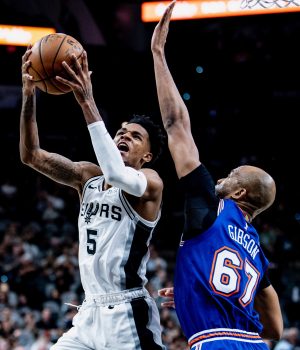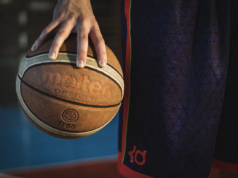This early in the season, it can be difficult to know if what’s happening on the court is actually important to defining who a team is, or if the small sample size of only a handful of games is skewing observations based on anomalies, or the play style of a team’s small list of opponents. One trend that may be in either of those categories – the Spurs have been scoring in transition much more frequently than last season, and one reason for that may be due to Dejounte Murray’s rebounding abilities.
Last season, 11.5% of all non-garbage time possessions the Spurs had on offense were classified as transition by CleaningTheGlass.com, ranking them 30th in the NBA. This season, though, 18.2% of all the Spurs’ non-garbage time possessions qualify as transition, ranking them 4th in the league. Our Paul Garcia noted the Spurs’ higher ranking in transition offense yesterday on Twitter:
All PS Premium databases have been updated with the latest numbers from the Spurs-Blazers game: https://t.co/pn7Skr9fhm
It's early, but the Spurs are ranked second in fast break points (21.5 PPG). Murray provides that spark.
Defensively, the Spurs are 29th in that same area.
— Paul Garcia (@PaulGarciaNBA) October 29, 2019
One of the biggest reasons for this change in pace has been the Spurs running on offense after grabbing defensive rebounds. Last season, the Spurs ran transition offense on 21.8% of possessions started with a defensive rebound. This season, that number has increased to 35.3%. Most of that is made possible due to Murray’s ability to rebound the ball.
In 3 games, Murray has had 22 defensive rebounds, a pretty incredible number for a guard. Of those 22 defensive rebounds, 4 led to a turnover and 1 was followed by a timeout. For the 17 defensive rebounds that were followed by a shot attempt, the first shot attempt in the Spurs’ following offensive possession came 8.65 seconds after the defensive rebound on average (these numbers are from NBA.com’s play-by-play data that only use whole seconds, so this number may be a bit off in one direction or the other).
According to NBA.com/stats, the Spurs only shot the ball before the 15 second mark on the shot clock 31.4% of the time last season. This season, however, the Spurs are doing that on average when Murray rebounds the ball.
The Spurs are fairly efficient when they are able to shoot after a Murray defensive rebound. In the 17 possessions that Murray grabbed the defensive rebound and the following Spurs possession ended in a shot attempt, the Spurs scored 1.12 points-per-possession. That number jumped to 1.50 points-per-possession when the Spurs shot in the first 10 seconds of the shot clock following a Murray defensive rebound (note: I’m counting a possession as the moment that the Spurs gained control of the ball to the moment that the other team did, so if the Spurs shot and missed, and a Spur grabbed the offensive rebound and scored, that would count as 1 possession).
Unfortunately, turnovers have been hindering the Spurs’ offense. Adding the possessions that end in turnovers to the numbers above lowers their points per possession after all Murray defensive rebounds to 0.90 points-per-possession (and 1.07 on possessions that resulted in either a Spurs shot in the first 10 seconds of the shotclock or a turnover). While the Spurs have found a modern way to be efficient this season with Murray on the court, their turnover issues early on have kept them from being as impactful on offense as they could be otherwise.
Despite that, as the season goes on Murray’s minutes restriction will be lowered, meaning he will be on the court to grab more defensive rebounds and begin more transition possessions from those rebounds, and as the Spurs are able to clean up their turnovers, those rebounds will lead to even more effective offense.
All stats from CleaningTheGlass.com unless noted otherwise.






